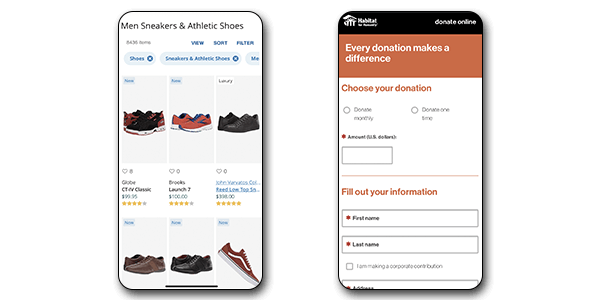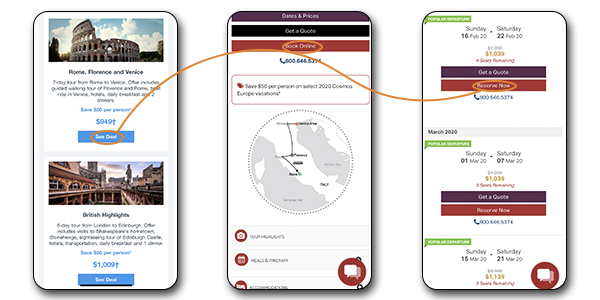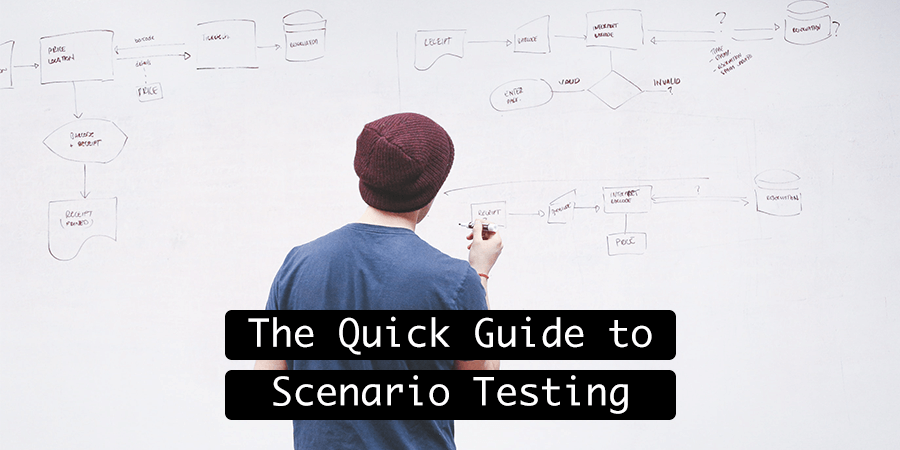What is Scenario Testing?
Within the field of software testing, scenario testing is an essential part of any user acceptance test (UAT) campaign allowing brands to uncover a variety of bugs or anomalies.
In particular, scenario testing, as opposed to exploratory testing, during a UAT campaign specifically allows brands to test key functions in their app, website, chatbot, or any software product, in a very precise fashion. More important, scenario testing enables QA teams to draft test cases that assess every function within important customer journeys that users take when navigating a digital product.
Why is the User Experience so Important?
From dating apps to banking websites, having a great user experience is of the utmost importance. Research confirms that when people are confronted with a poor user experience, they are much more likely to leave the website or app and never return. While a poorly designed user interface can contribute to a disappointing user experience, software bugs are also a root cause of a miserable user experience.
When software bugs arise, it is often to the detriment of the user experience especially when bugs affect key functions or customer journeys. When this occurs brands can expect to see a decline in their KPIs such as a drop in their conversion rates, higher bounce rates, and overall traffic.
The link between scenario testing and a great user experience
There is no doubt that it is a good practice to execute scenario testing to uncover functional bugs that can impede the overall user experience and jeopardize business goals.
More specifically, scenario testing makes it possible to uncover bugs that prevent users from completing certain actions such as placing an order on an e-commerce website or subscribing to a company’s newsletter.
Key examples
For associations or charities that rely on private donations, having a website or app where people can financially support their cause is great. More importantly, it is crucial to have a process that is easy to use and facilitates the donation process. Scenario testing helps QA testers to validate all of the site's or app's functions, step by step, to ensure users are not impeded by any bugs that can ultimately dissuade them from making a donation.

For both of these mobile websites, having functions that can improve the online shopping experience or financially support a charitable cause is extremely important to their business goals and brand image.
In the e-commerce industry, scenario testing uncovers bugs that can negatively affect key parts like the purchasing funnel. Test cases can also verify other processes or functions such as checking in-store inventory, viewing an item, or signing up to receive an email when an item is back in stock.
In the end, scenario testing is part of any quality UAT campaign and general test strategy.
When to Execute Scenario Testing?
It is a good practice to carry out UAT campaigns early and often as a general testing principle. Nonetheless, there are some specific situations that are better suited for scenario testing.
Projects that follow the agile method
Within development projects that employ the agile method, scenario testing should be executed within each sprint when new functions are added or existing ones are updated. By uncovering bugs earlier, developers can begin working on correcting the most urgent ones and keep the project on track.
A sudden decline in KPIs
After apps or sites are launched, an unexpected and sudden decline in website or app KPIs such as conversion rates can signal a good time to execute a scenario testing campaign. Doing so will help brands determine if any bugs are hindering critical functions and preventing users from completing specific actions resulting in the decline in the affected KPIs.
Before critical marketing campaigns
Scenario testing can also provide tremendous value to brands before they launch large marketing campaigns. When brands launch large email or social media marketing campaigns, it is a good idea to test call to action buttons as well as the functions within the customer journeys that result from the email or advertisement.
For example, transportation companies often launch special offers or promotions via email campaigns or online ads during traditional travel or holiday periods.

With scenario testing, brands can test the email or ad as well as the customer journey to uncover any bugs that can limit the results of the campaign.
When you just need a thorough check
Since scenario testing is a way for brands to validate key functions and their general customer journeys, it may be a good time to test when brands want to ensure these elements are working in tiptop shape. As they say, an ounce of prevention is worth a pound of cure.
How to execute a scenario testing campaign?
Preparing a scenario test is all about drafting a test script that outlines, step by step, the purpose and directions of the test.
To draft a thorough test script, it is important to have the proper resources or documentation which can include the storyboard, function specifications, wireframes (recommended), backlog, and the actual app, website, chatbot, etc., being tested.
Using these resources, it is essential to draft each test step detailing the actions the tester will take to execute the test step along with the expected behavior or outcome, which will allow the tester to validate each test case. In addition, it is important to assign a testing configuration to each test case to guarantee that the test is executed using the right device, operating system, and/or browser (if needed).
Writing each test step with a clear and consistent voice will also go a long way towards helping testers understand exactly how the test cases should be executed. For more information regarding drafting test cases, check out our article on how to write a test.
The Advantages and Drawbacks of Scenario Testing
Within UAT campaigns, scenario testing presents a number of advantages, which makes it possible for QA teams to...
- Test specific functions, user paths, and customer journeys that are vital to one's business goals.
- Verify test cases are executed in a consistent and precise manner thanks to a thorough and detailed test script.
- Uncover more bugs including those tied to key functions and customer journeys.
- Provide a high degree of confidence regarding the readiness of a digital product by testing every function.
However, scenario testing presents particular drawbacks for QA teams representing...
- A more time consuming QA method as adequate time needs to be allocated for the test scripting writing phase as well as the execution each test step.
- A less ideal way to assess the aspects related to the overall user experience especially when test cases focus strongly on validating functions.
- A QA methodology that requires more anticipation and planning since it is unreasonable to expect QA teams to plan and execute the test last minute or without the proper resources.
To learn more about QA testing, please do not hesitate to download our white paper: How and Why to Test in the Era of Digital Transformation.

.png?width=1200&name=Banner-how-and-why(1).png)





.png?width=1200&name=Banner-how-and-why(1).png)

